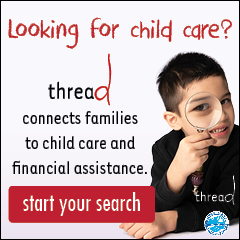CHILDREN & FOOD ALLERGIES
Story by Sarah Gonzales
For six exhausting weeks, Kristiann MacLean’s newborn cried nonstop for three to four hours each night. The new mother thought colic might be the culprit. Finally, feeling desperate, she talked to a naturopathic doctor who asked her if she’d tried experimenting with her diet.
The baby was breastfeeding exclusively but MacLean herself was eating dairy. “She recommended that I cut out dairy,” says MacLean. That first night, the baby slept fine.
But the food allergy scares weren’t over. About a year later MacLean’s daughter tried hummus at a friend’s house; soon afterward her mouth and face began to swell. “We were freaking out,” she says. “They had children’s Benadryl and within two minutes the swelling had gone down.” A follow-up appointment with an allergist revealed that her daughter was allergic to sesame.
This sequence of events – have a scare, assume it’s a food allergy, call the doctor – is precisely how most parents end up at the office of Dr. Thad Woodard, an Anchorage pediatrician specializing in child and adolescent asthma at the Alaska Center for Pediatrics and host of the radio program “Line One: Your Health Connection” on KSKA 91.1.
“Usually you start with a very clear history of some problem – stomach ache, vomiting, diarrhea, rash – that starts within minutes of eating some product,” Woodard says, explaining how food allergies are identified and treated. “Then the typical way is that you would follow that with a test to document it.”
Pediatric allergist Dr. Jeffrey Demain, director of the Allergy, Asthma and Immunology Center of Alaska and president of the Asthma and Allergy Foundation of Alaska, says childhood food allergies are on the rise. It’s estimated that 8 percent of children under age 3, and 3-4 percent of children under age 18 suffer from them.
“Our rates have significantly increased in 20 years; some would argue that they’ve at least doubled,” Demain says. Why is this? “One of the most popular theories is the ‘hygiene hypothesis’ which basically says that our environments and our food are too sterile,” he explains. The theory goes that we’re not exposed to the same amount of germs and bacteria as our farm-dwelling ancestors who lived around livestock, so our immune systems are comparatively less aggressive. “I don’t recommend that (children) eat more dirt and bugs,” Demain says with a laugh. “But that’s one thought.”
The most common allergens that both doctors see are milk, egg, peanuts, soy, wheat, tree nuts, shellfish and corn. “But,” Demain cautions, “it’s really important to state that any food can cause an allergic reaction.”
As a child MacLean had an allergy to dairy, but outgrew it in her teens. “The likelihood that an offspring of one parent who is allergic of developing an allergy is 40 percent,” explains Demain. “If both parents have an allergy it is 65-70 percent.” Food allergies may be hereditary, but the good news is that most children develop a tolerance and allergies to most foods go away during childhood. This isn’t always the case: peanuts, tree nuts, fish and shellfish allergies are more likely to be lifelong.
Demain and his team, which includes a nutritionist, spend a great deal of time working with the family, helping them identify and avoid culprit foods, and determining what foods to replace them with. Allergies needn’t interfere with healthy eating, Demain stresses. For pregnant or breastfeeding mothers, he recommends supplementing with vitamin D and Omega-3 fatty acids, as there could be a link between these and diminished instances of food allergies in babies. “Patients who are breastfed are less likely to develop allergies and if they do the allergies are less severe,” he says.
Knowledge, prevention and adaptation are the keys for families coping with childhood food allergies. MacLean is well aware of this. Both of her children, ages 4 and 13 months, have food allergies. Maintaining a safe and healthy daily life is “all about prevention,” she says. The family keeps an EpiPen at home and at daycare in case of an emergency. “We’ve adapted because we’ve had a few years of tweaking the system.”
Learning how to bake sans dairy and eggs has been an especially important skill, says MacLean – that way her daughter can bring her own allergen-free cupcakes to birthday parties. Her parent-to-parent advice is to get Cybele Pascal’s “The Whole Foods Allergy Cookbook.” “It’s the kind of food that the entire family wouldn’t mind eating,” she says. And that is certainly tastier than eating dirt and bugs.










